The Astronomical Costs of the Apollo 11 Moon Mission
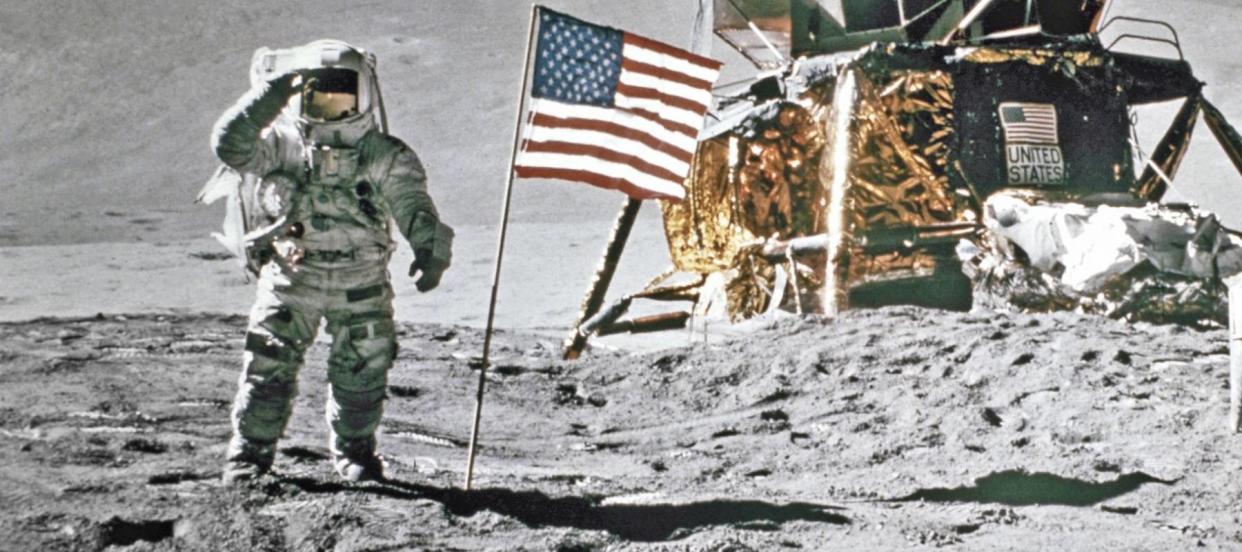
Mankind's first landing on the moon 50 years ago was a towering achievement, the ultimate trip of a lifetime -- and an incredibly expensive undertaking for the U.S. government.
Some of the dollar amounts look breathtaking, and then you realize they haven't even been adjusted for inflation. In today's dollars, the costs are truly out of this world.
From rocket development to life insurance to "travel expenses" for the astronauts, the race to the moon racked up some truly mind-boggling bills. Take a look.
1. The lunar lander
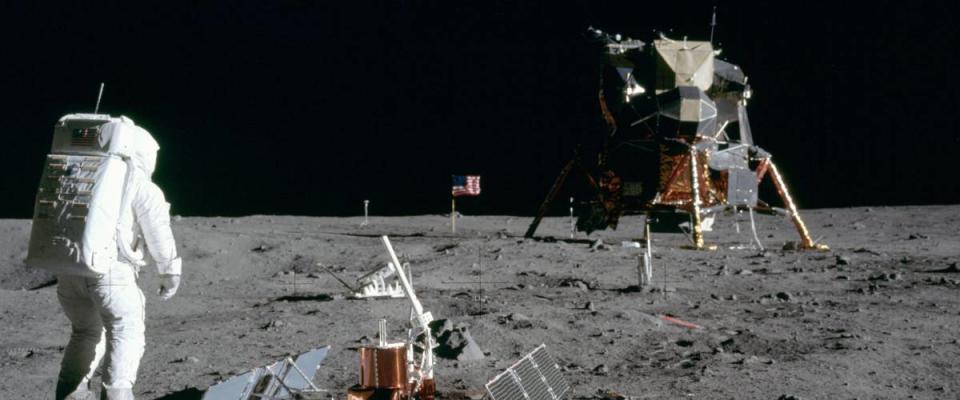
Buzz Aldrin looks back at the Lunar Module Eagle, presumably in wonder.
The 1969 lunar lander, officially called the Apollo Lunar Module Eagle, was piloted onto the surface of the moon by Neil Armstrong.
Ten modules were made for the Apollo program at the incredible cost of $2.4 billion in 1969 dollars, according to an analysis by the Planetary Society. That translates to a whopping $23.4 billion today.
Technical problems delayed the lander’s first flight by 10 months — but eventually the Eagle got its wings.
Six out of the 10 modules would land men on the moon.
2. The space suit
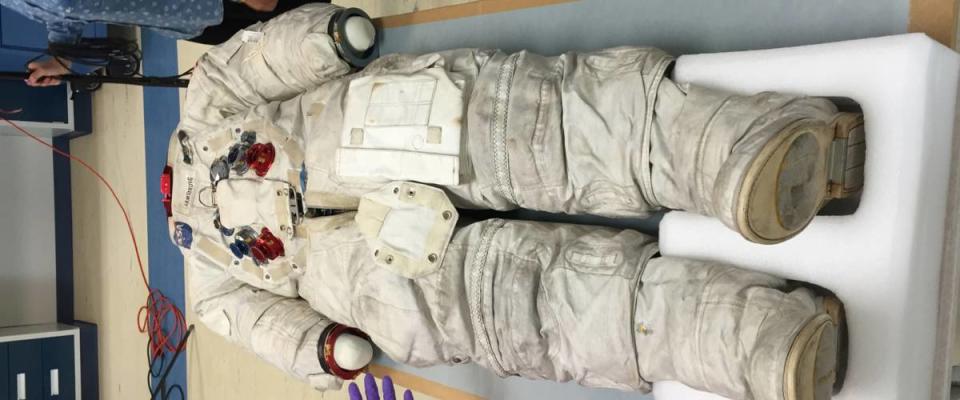
Neil Armstrong's Apollo 11 spacesuit on display at the Smithsonian's Udvar-Hazy Center.
Designing the space suit that made Armstrong’s “small step” possible was a massive leap for International Latex Corporation, makers of Playtex bras.
The suit cost an estimated $100,000 to develop at the time, about $700,000 today.
The mostly hand-stitched contraption was made of 21 layers of synthetic fabric, rubber and polyester films and would protect Armstrong from extreme temperatures, deadly solar ultraviolet radiation and micrometeorites.
The suit has undergone a four-year restoration for its return to the Smithsonian, at a cost of another $700,000. You can still see moon dust on the boots.
3. The astronauts’ salaries
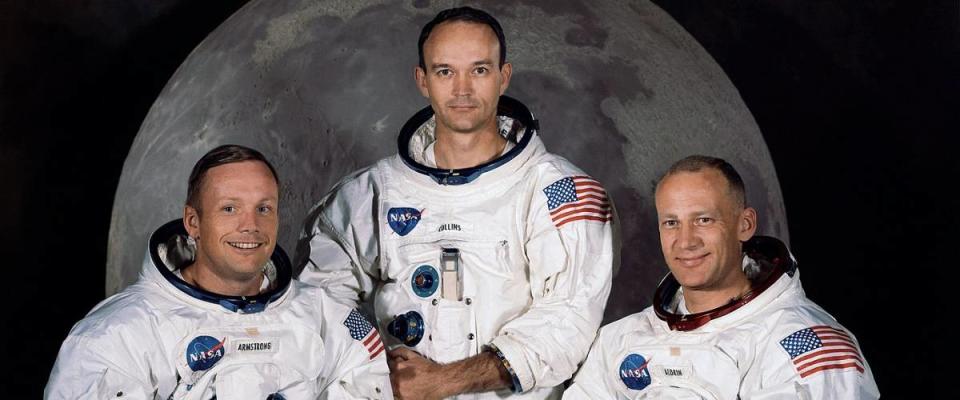
Pictured from left to right, Neil A. Armstrong, Michael Collins, and Edwin E. Aldrin Jr.
Armstrong, his fellow moonwalker Buzz Aldrin and their teammate Michael Collins all risked their lives to fly to the moon in 1969, but was the pay worth it?
Armstrong, the commander of the mission, was paid the highest salary: $30,054 per year, according to a 1969 NASA news release. That's worth $209,758 today.
Aldrin earned $18,622.56, which may not sound like much — but it works out to $129,973 in today's inflated dollars.
Collins piloted the command module Columbia and stayed in orbit while the other went down to the moon. His NASA salary was $17,147.36, which is the same as $119,677 today.
4. Life insurance for an astronaut
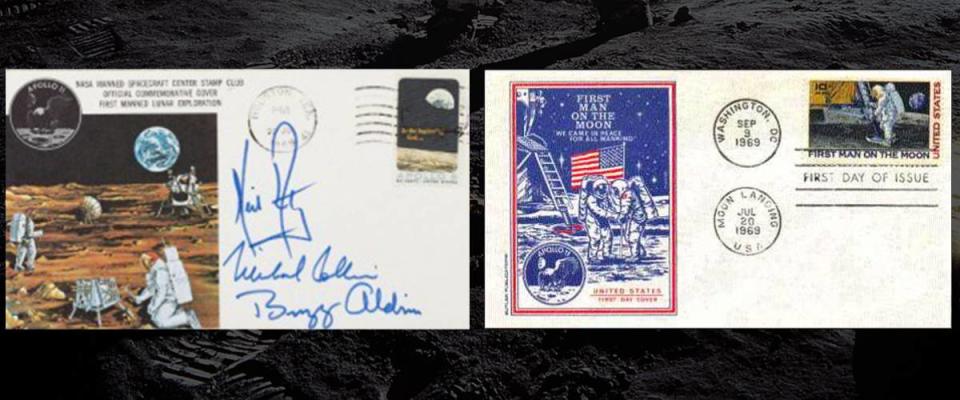
Pictured on the left, Buzz Aldrin's signed postal cover. On the right, Apollo 11 First Man on the Moon First Day Cover.
In 1969, life insurance companies quoted otherworldly premiums for the Apollo 11 astronauts, costing several times their yearly salaries and far beyond what anyone could pay.
The space travelers found an alternative: They autographed postal "first day covers" commemorating the mission, and left them for their families. The idea was that if the men died on the mission, their loved ones could sell the valuable memorabilia.
When the covers finally hit auctions in the 1990s, they sold for up to $30,000 each.
The envelope covers feature commemorative stamps and are illustrated with the mission emblem, artists’ depictions of the moon landing, and images of the astronauts themselves.
5. Buzz Aldrin's travel expenses
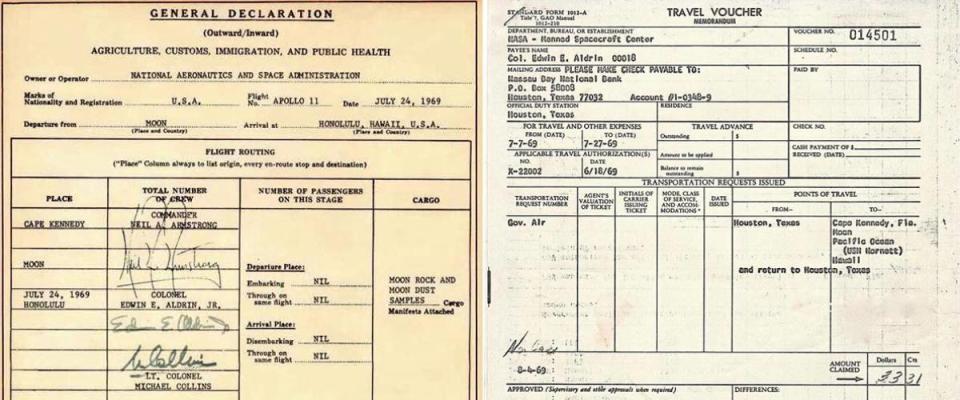
On the left, Buzz Aldrin's customs declaration upon re-entry — the right, his travel expenses form.
Work trips and travel expenses go hand in hand, even when you’re going to the moon.
Buzz Aldrin submitted to NASA a travel expense report totaling the very earthly sum of $33.31. (About $232.50 today.)
His voucher shows he traveled from Houston to Cape Kennedy, Florida, and then on to the moon (of course). On his way back, he hit the Pacific Ocean and Hawaii before returning home to Texas.
Aldrin also filled out a Customs form upon his return from space, declaring his moon rocks and moon dust samples.
6. The flag
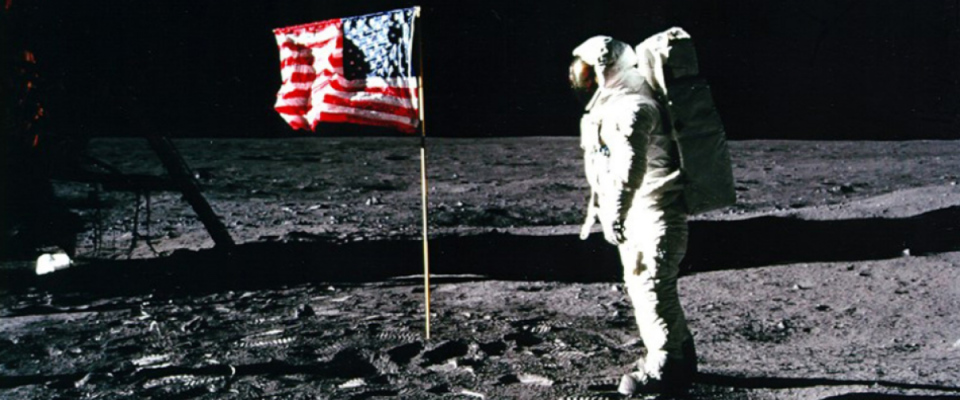
The American flag planted on the moon cost just $5.50.
The famous 3-by-5-foot American flag planted on the Moon in 1969 was nothing special on its own.
The simple nylon flag cost just $5.50, while the metal tubing holding it up was $75.
However, the flag’s specialized packaging cost several hundred dollars. During the lunar lander’s descent, the packaging protected the flag from exhaust that reached a fiery 2,000 degrees Fahrenheit before touchdown, NASA says.
The hefty packaging included a stainless steel outer case, Thermoflex insulation and an aluminum layer, plus more thermal insulation foil — all on top of the inner case holding the flag.
7. The 1969 G.I. Joe astronaut figure
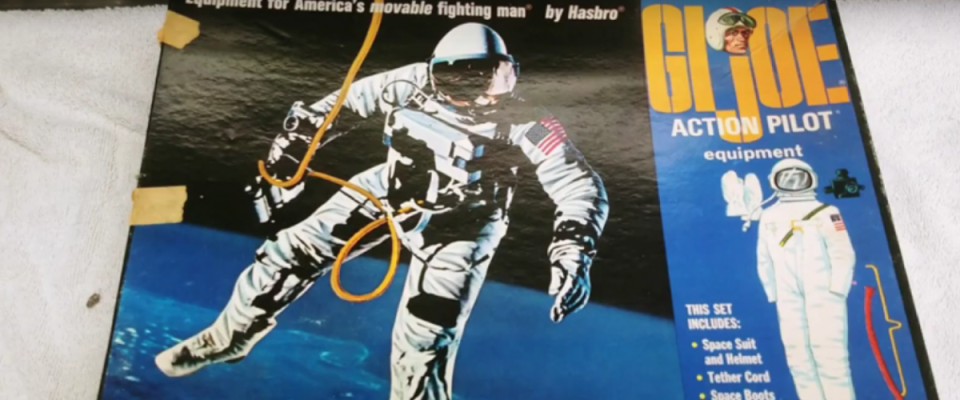
Kids were over the moon about Astronaut G.I. Joe.
The lunar landing captured the imaginations of American kids during the 1969 holiday season.
That year's Sears Christmas Wishbook featured the super popular Talking G.I. Joe, selling for $4.99. The figure came with a spacesuit.
For $6.99, you’d get the motherlode: Astronaut Joe with a full silver space suit, camera, tether cord and backpack, plus a realistic floating space capsule and an audio record of actual space sounds.
A 1969 astronaut G.I. Joe with the space capsule, original box and record recently sold on eBay for about $300.
8. Fuel and other space flight costs
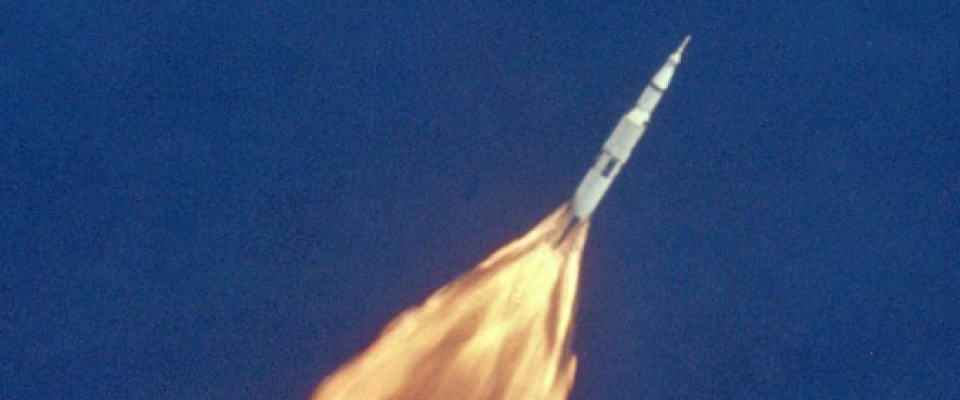
Fuel and other flight costs for Apollo 11 cost half a billion dollars.
Can you imagine how much fuel it takes to power a rocket to the moon?
NASA data shows that the Apollo program spent $546,400 on “manned space flight operations” in 1969 — equivalent to $3.9 million today.
NASA is currently developing the Space Launch System toward the goal of launching astronauts to the moon and Mars starting in 2024. Space agency chief Jim Bridenstine told CNN the project will cost up to $30 billion.
For private citizens, a suborbital flight costs a mere $250,000 aboard Virgin Galactic.
9. NASA's original Apollo 11 videotapes
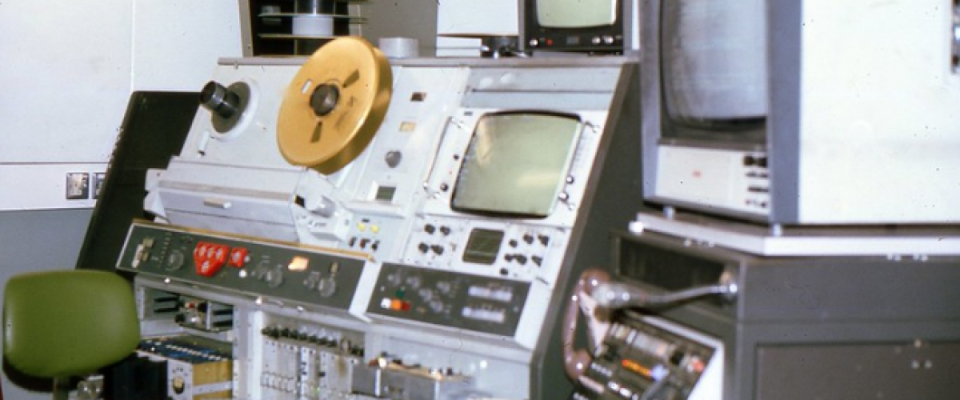
NASA's original videotapes of the lunar landing are expected to fetch up to $2 million.
On July 20, 1969, Mission Control recorded nearly an hour of video footage of the world’s first manned lunar landing.
The moonwalk was recorded on Ampex VR-2000 video using four 2-inch magnetic tapes orginally costing $300 each.
Three of those reels just sold at auction for $1.82 million. Auction house Sotheby's said the moonwalk tapes covered “virtually the entire period of the EVA [extravehicular activity]” and that “the audio quality ... is excellent.”
The tapes were sold on behalf of a former NASA intern who bought them at a government auction in 1976 for only $217.77.
10. Total cost of Apollo program
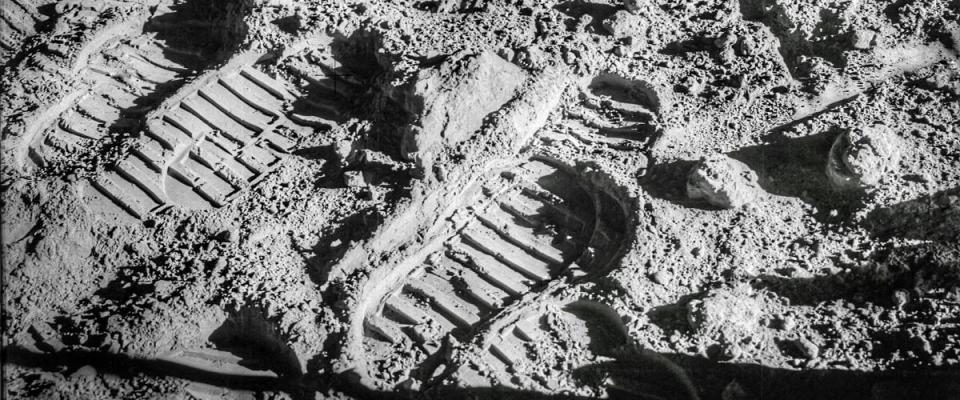
The 13-year Apollo program cost almost $300 billion in today's dollars.
The Apollo program ran from 1960 to 1973 and racked up a total cost of $28 billion over its extraterrestrial run — or $288.1 billion in inflation-adjusted dollars, the Planetary Society says.
Over its 13 years, the program achieved legendary feats, including the 1969 lunar landing and the development of new rockets, spacecraft and ground systems technologies.
Surprisingly, the highest year for Apollo spending was 1966, three years before the first mission to the moon.
When the money stopped flowing in 1973, NASA's budget plan said simply that "the planned objectives of the Apollo program have been accomplished."

